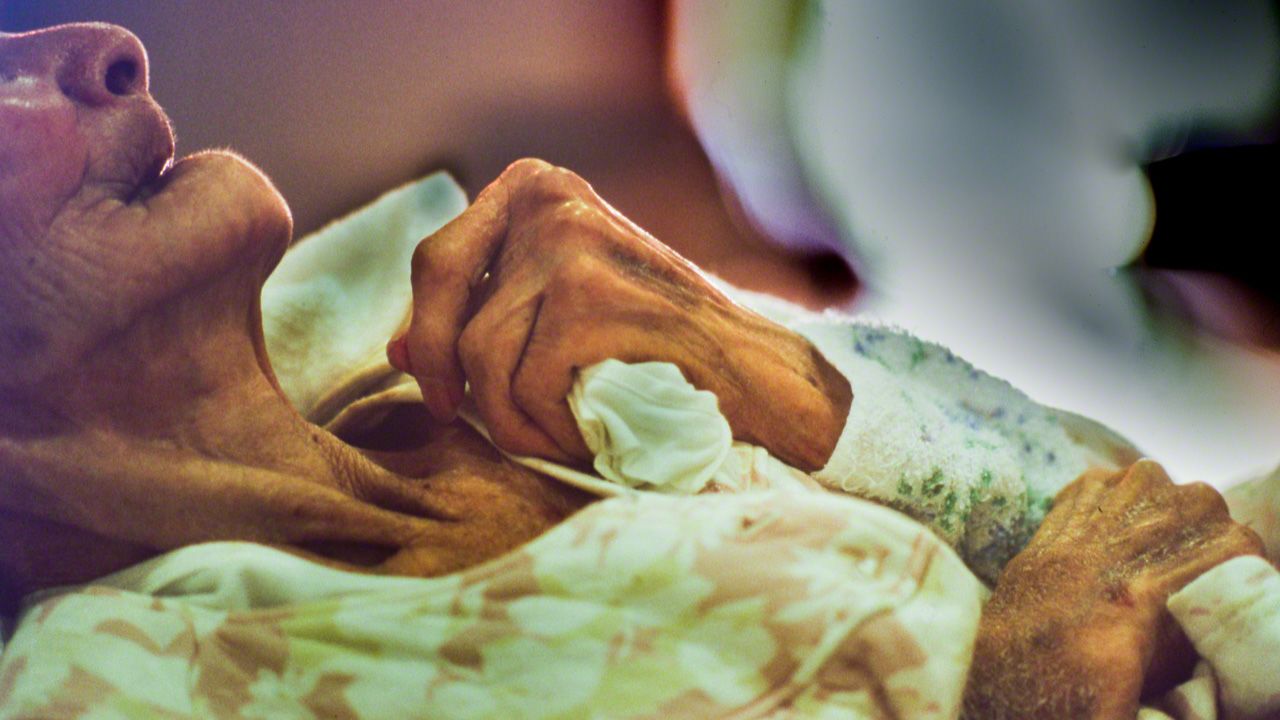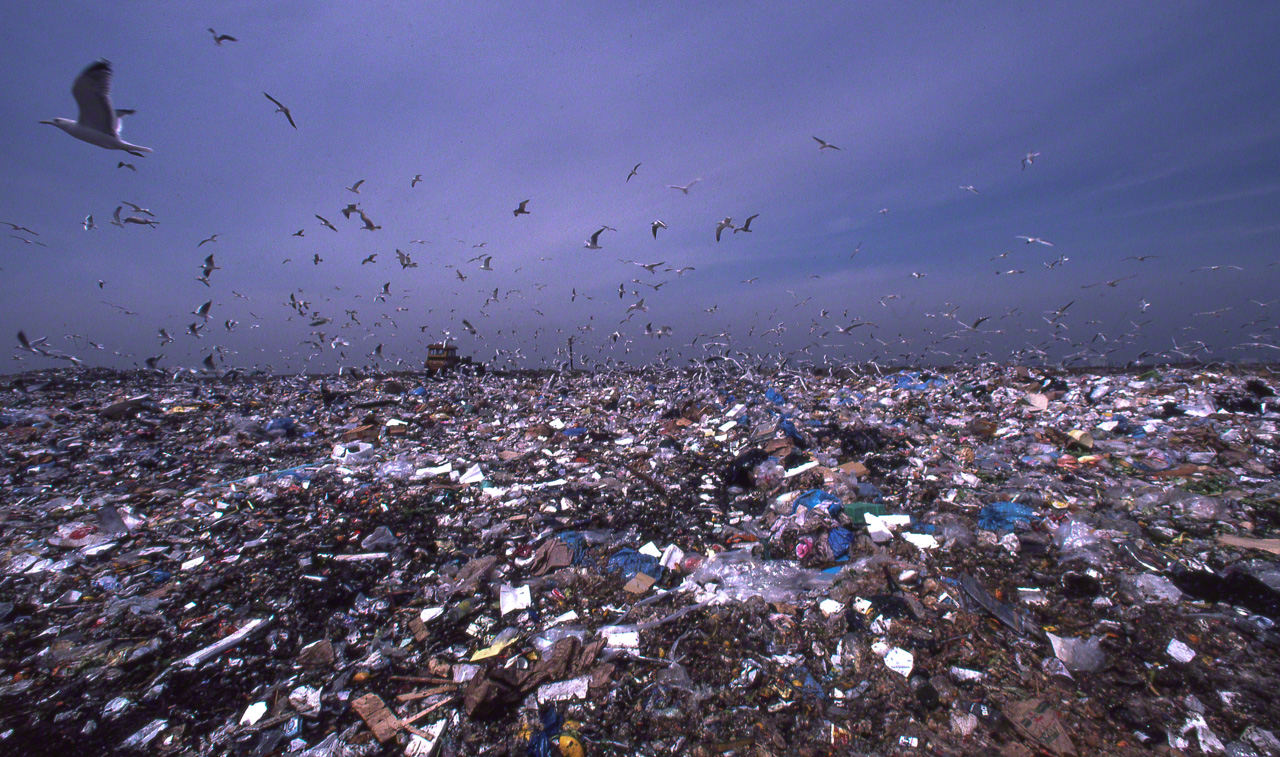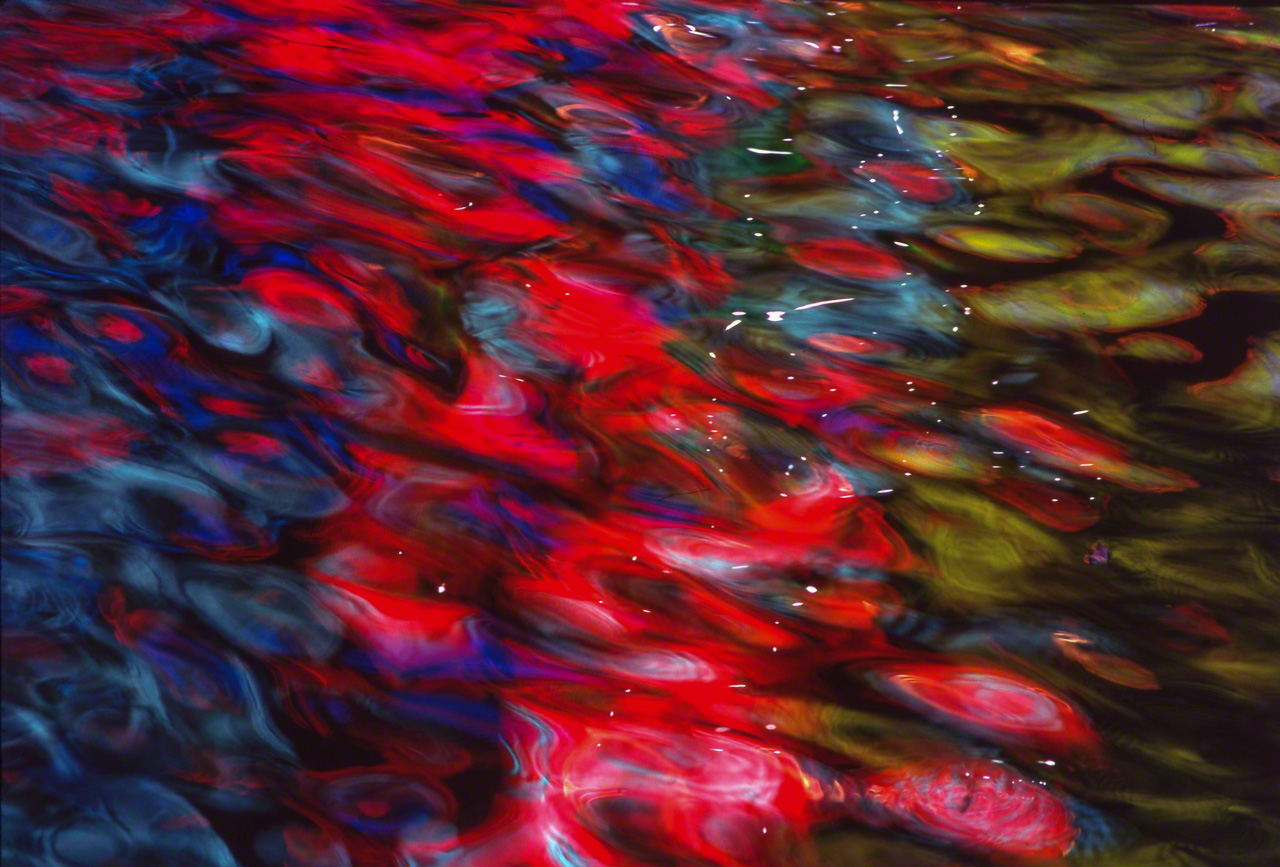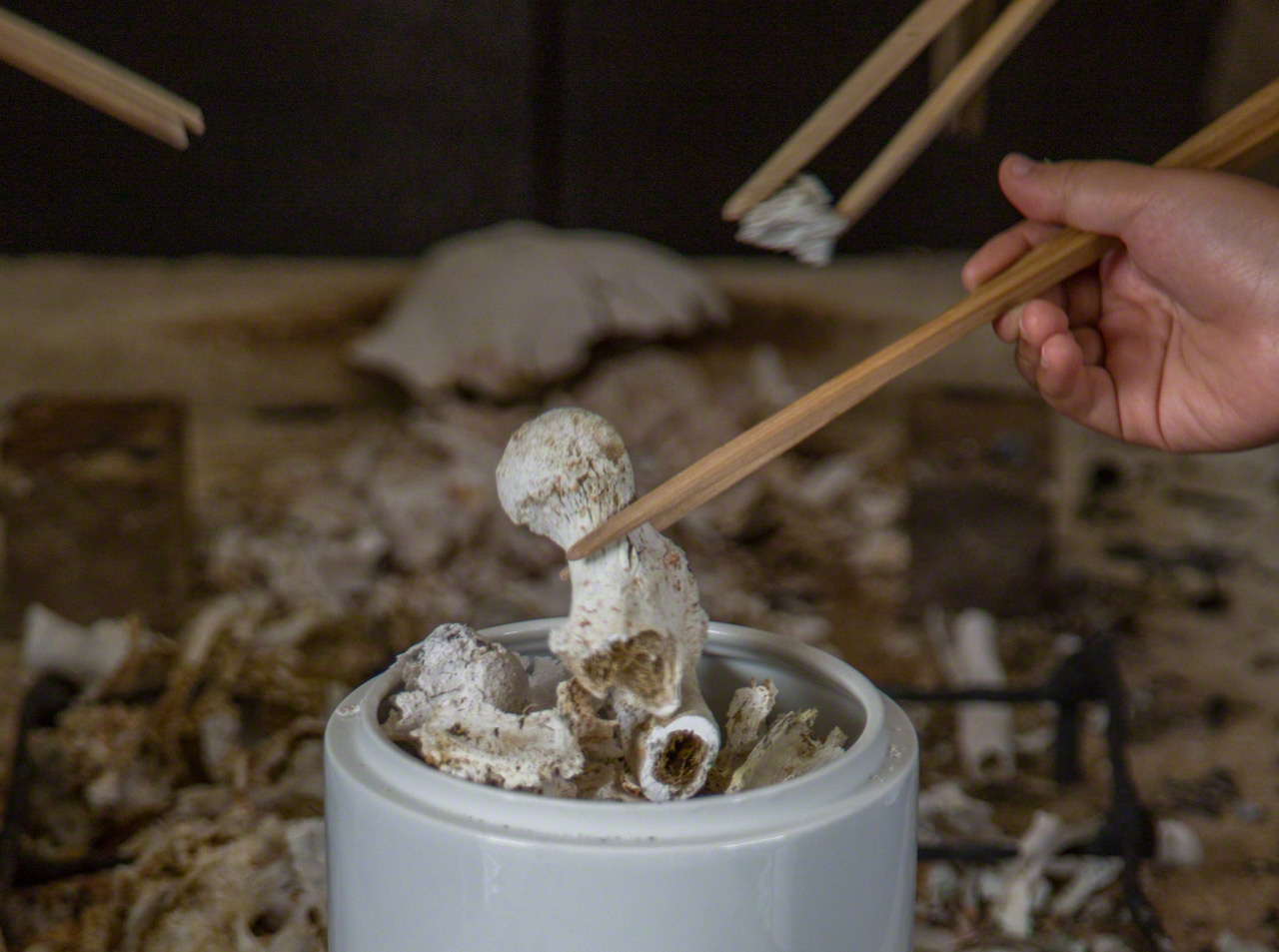
Confronting the Years: A Photographer’s Tour of Japan’s Hyper-Aging Society
Photographing the Four Unavoidable Sufferings: Death Begins at the Moment of Birth
Society Health Images- English
- 日本語
- 简体字
- 繁體字
- Français
- Español
- العربية
- Русский
Japan: Archipelago of the Elderly
Old age is extending its cold grip over the Japanese archipelago, like a mounting mantle of snow. Over the past decades, Japan has become the oldest society in the world. The aging society is combining with a declining population and a precipitous decline in the birthrate to cast a deep, looming demographic shadow. According to some forecasts, there will be as many as 30 million people aged 70 or older in the country by 2025 (equivalent to a quarter of the population). I became one of them myself when I turned 70 at my last birthday.
After seven decades of life, the human machine is running low on oil and starts to rust. Colors fade as the dents of old age deepen. I have developed the habit of placing a simple stethoscope to my chest and listening to the sound of my own heartbeat. As I listen to the familiar rhythmical boom deep in my chest, it sometimes astonishes me to think that this faithful old organ has been pumping my blood for so long, without a moment’s rest. I find that listening to my own body in this way, entering into dialogue with it, and allowing myself to feel tenderness for its frailties, helps to resign me to the inevitability of physical decline, and makes me resolved to live my life to the full, even in the downhill years that lie ahead.
By this stage in my life, I have become accustomed to the brutal frequency with which people close to me slip away, going on ahead of me in ones and twos into the unknown. The family home, once so full of boisterous energy, has become a shrunken shell of its former self, and I now count myself lucky if I have someone—almost anyone—to talk to. I have reached the condition described by Ozaki Hōsai, the “free haiku” poet of the early twentieth century, who wrote of a lonely old man as “Even coughing, still all alone.” I think of the many people in this country who through no real fault of their own find themselves counted among the “impoverished elderly” (karyū rōjin), fearful of how they will make ends meet in their later years, apparently causing nothing but inconvenience and irritation to the people around them, and forced to spur their creaking bones to yet more labor to help them through their twilight years. Japan is becoming an archipelago of the elderly and infirm.
But aging is not only a story of hardship and disappointment. If you shift your perspective, it presents another face—a kindlier aspect of reconciliation, resignation, and relief from the hard work and preoccupations of younger years. Sometimes, waking in the dawn hours, or succumbing to a wave of drowsiness in the early afternoon, my imagination wanders free across distant memories, reverie and reality combining as I drift languidly on a merry-go-round of memory. It is hard to describe the happiness of these moments of peace and contentment.

(© Ōnishi Naruaki)

(© Ōnishi Naruaki)

(© Ōnishi Naruaki)
Buddhism teaches that “four universal sufferings” are inherent in every human life: birth, aging, sickness, and death. All living things inevitably age and die. Given that this is part and parcel of what it means to be alive, I have always felt that it is important to look this truth in the eye, to have the courage to observe the process of aging and decay without averting your gaze.
Back when I first became interested in photography and scrabbled together the money to buy a camera, the first thing I photographed with my proud new acquisition was a rubbish dump. I felt strangely invigorated as I took pictures of the piles of flotsam and jetsam that had wound up there: detached mannequin heads, futons leaking their stuffing, scraps of leftover lunches, and faded glossy magazines with discolored images of naked models. This was the final resting place of the detritus of a consumer society. Something about it stimulated my imagination.
From the moment we are born, our cells are constantly breaking down and being replaced by new ones. But as they age, old cells as they deteriorate can start to spread toxins through our bodies, sending us down the spiral of illness.

This picture was taken 42 years ago. During the period of rapid economic growth, it was a landfill site, but today it has been reborn as the Yume no Shima (Dream Island) Park in Kōtō, Tokyo. (© Ōnishi Naruaki)
Life Like a River
When I was present for the birth of my first child, one of the things that astonished me most was the sight of the placenta that came spilling out with the afterbirth. Throughout the long months of gestation, this organ had provided nutrients and oxygen from the mother’s body to the fetus, as well as removing waste products from the growing baby’s blood. I felt I understand why in times gone by, our ancestors were so in awe of the glistening red-purple placenta, with its thick chasing of blood vessels, that they joined their hands and gave thanks for its miraculous life-giving properties. According to one theory, this is the original source of the Japanese word ofukuro (literally “bag”), a term of endearment for one’s mother.

As a pregnancy approaches term, it is nearly time for the fetus to leave its floating home in the amniotic fluid (which has the same salinity as seawater) and set off on its journey through life. (© Ōnishi Naruaki)

The cord blood that remains inside the umbilical cord and placenta is rich in blood-forming stem cells, and has many uses in regenerative medicine. (© Ōnishi Naruaki)
I once spent around 20 years photographing nearly 200 rivers for a series of photographs on the Rivers of Japan. “Kawa no nagare no yō ni” (Like the Flowing of a River) is a song by the legendary enka singer Misora Hibari, which became her last hit in 1989. The song has become an enduring classic, no doubt partly because so many people in Japan and elsewhere share the sense that their lives can be compared to the course of a river as it flows.
In their upper reaches, most rivers look more or less the same. As you approach the middle course, different confluences join the stream; the river carves its unruly way through ravines, seething with a surfeit of energy like a young person in his or her prime. Further downstream, close to the mouth, the fate of each river starts to come into focus. Some flow gently into the sea, some are swept up into huge industrial complexes and set to work in factories and refineries, while others spread out to form mudflats and provide a nursery for diverse forms of new life. In their endless variations and unique destinies, rivers reflect the diverse outcomes of the human aging process.
Salmon fight their way upstream, using their last reserves of strength to spawn and then expiring in exhaustion. Many species follow more or less the same pattern, dying soon after passing on their genes to the next generation. But human lives follow a different trajectory. We often live on for decades after our children are grown, experiencing a prolonged period of delay between adulthood and death. This is perhaps one of the things that makes human beings unique. Surely we should make the most of this uniquely human lifespan and use the wisdom and experience of old age to benefit our society, local communities, and future generations. And perhaps we might also learn to look death in the face, to overcome our fear of our inevitable end, and achieve a kind of élan vital: this is my ideal of a mature and wise old age.

Two ears: on the left, the ear of a one-year-old infant; on the right, the ear of a centenarian. Of the five senses, hearing is said to be the one that lasts until the moment of death. (© Ōnishi Naruaki)

People release lanterns onto the Hinokinai River as part of the midsummer Obon festival in Kakunodate, Akita Prefecture. The lanterns light the souls of the ancestors on their journey downriver and back across the sea, to the land of the dead. (© Ōnishi Naruaki)

Close to the mouth of the Naka River in Tokushima Prefecture, Shikoku. A dog’s skull lies among the flotsam washed downriver. (© Ōnishi Naruaki)
The Valley of Death
Today, some 80% of people die in a hospital. It has become the norm in our society for people to begin and end their lives in a medical setting. It is hard to shake the sense that something of the raw, instinctive, animal lifeforce has been lost from our modern lives in exchange for safety and peace of mind. I can’t help feeling sometimes that we have given up something precious we might have done better to hold onto.
Many people today are in the habit of scurrying off to a doctor as soon as they sense even the slightest change from the usual in their physical condition. They are tested with the latest medical equipment, a name is given to their illness, and they are signed up as invalids with a recognized array of symptoms. In many cases, they heave a sigh of relief. They are fed from an overflowing smorgasbord of drugs, undergo operations and rehabilitation programs, and eventually become confined to bed and slip into the great beyond.
But Japan is already one of the world’s oldest societies, and an inevitable consequence of this will be a high mortality rate in the decades to come. Hospitals may no longer have the capacity to provide a place for people to go and die. We need to take an honest look at the reality and ask ourselves how and where we want to end our lives.

A small part of the vast constellation of medicines available today. More than 25,000 types of drugs are licensed for use in Japan, one of the world’s top nations in terms of medicine consumption. (© Ōnishi Naruaki)
Rather than lamenting the illness that has overtaken them, these people embark on a course of physical rehabilitation, trusting in the latent strength that still lies within them. The power of dreams can open up new possibilities for the future. (© Ōnishi Naruaki)
I remember an experience I had when I was 22. I was working on a construction site, and stepped onto a thin plywood board that covered a gaping hole in the flooring on the fifth story of the building we were working on. Before I knew what was happening, I fell backwards through the ceiling to the fourth story below. Even as I felt the fear of death, I was enveloped in a strange sensation of stillness and tranquility. It must only have lasted a heartbeat or two, but it was as if there was someone else—another me—looking on as I fell, like watching a movie in slow motion. My whole life flashed in front of me. It was only a brief moment, but I was caught up in infinity. And the thought occurred to me: This is how people die.
It was only later that I understood the significance of those brief moments that seemed to last forever, when I read accounts by people who had had near-death experiences. If death is something as sweet and painless as that, is there really any need to be so afraid of it? I prefer to think of death as something that lies silently, waiting to carry us gently away.

Neon light glints on the Dōtonbori canal in the heart of downtown Osaka. In the words of the Heart Sutra: “Form is emptiness and emptiness is form.” (© Ōnishi Naruaki)

As this persimmon leaf decays, it develops colors of a strange otherworldly beauty. (© Ōnishi Naruaki)

Transferring the bones to an urn after cremation at a Buddhist funeral in Japan. The physical flesh of this world becomes the biomineral of bone as the soul crosses over to the other shore. (© Ōnishi Naruaki)
Since I was a small child, I have believed that people become part of the stars when they die. Long ago, a shard from one of the stars that drift through the heavens above us fell to earth, and the substances it contained became the seeds of all life. Some 3.8 billion years ago, the first single-celled organisms were formed somewhere in the seas. Over a mind-bending length of time, those cells have evolved to become the tens of millions of lifeforms we see all around us today. This is the epic story of life on earth.
Sometimes when I look up into the night sky, I ponder the bare reality of our lives, as things that came from space and will return there one day. Perhaps there could be no better time than old age for allowing the imagination to take flight and consider the strange story of our journey from outer space to earthly cells and back again. With thoughts like these at the back of my mind, I want to use this series to visit the frontlines of our aging society, and to reflect on what it means to grow old in a society that is itself older and frailer than any that has come before it in history.

In Japanese Buddhism, the souls of the dead cross the Sanzu-no-Kawa to get to the afterlife. The eerie glow of this photograph was achieved by using a long exposure at dusk, at the Yahagi River in Aichi Prefecture. (© Ōnishi Naruaki)

Children hunting for insects during their summer vacation. A lot of the dreams you have in old age seem to draw on memories from childhood. (© Ōnishi Naruaki)

Sometimes if I look into the sunlight for long enough as it streams through the canopy of trees, I feel as if I have slipped back in time to the birth of the universe. (© Ōnishi Naruaki)

Chrysocolla is a mysterious mineral that can sometimes bear a strange resemblance to images of our blue, watery planet of earth seen from space. (© Ōnishi Naruaki)
(Originally published in Japanese. Banner photograph: A bed-bound old woman in a nursing care center for the elderly. © Ōnishi Naruaki.)
photography medicine aging depopulation aging society longevity death
